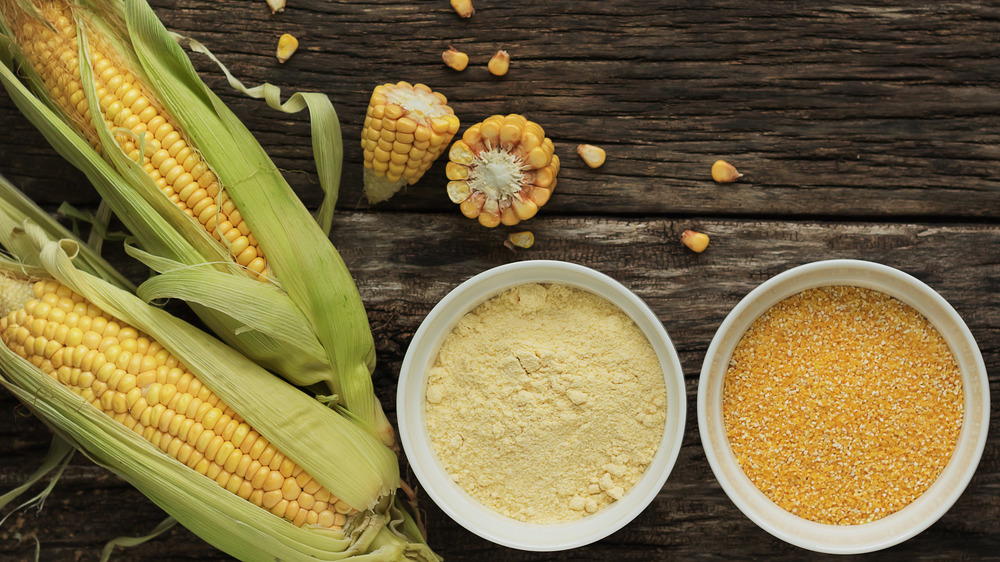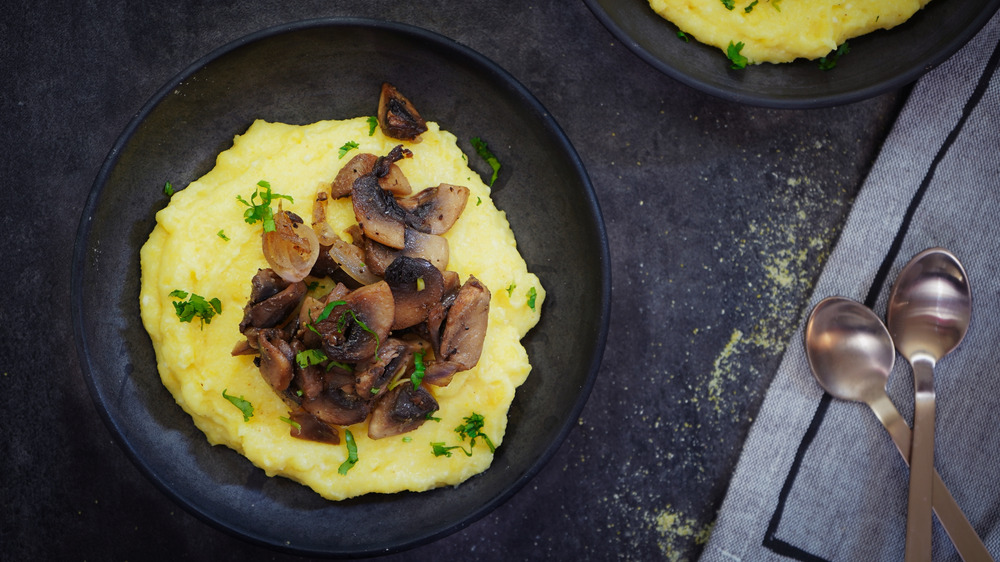This Is The Real Difference Between Grits And Polenta
Grits and polenta, while one is a classic Southern food staple and the other from Italy, Bon Appétit states that both are used to create comforting dishes made from ground corn — but there are a few more differences between the two than you might expect.
The main difference between grits and polenta is the type of corn each food is made out of. Polenta (being a brighter yellow color) is made out of yellow corn, whereas grits are made out of white corn. Bon Appétit added that, in addition to a difference in color, the different types of corn changes the texture between the two. Polenta is flakier and more coarse, with a chewy texture, while grits have a smoother consistency.
When searching the grocery store for grits or polenta, you could run into trouble. According to Allrecipes, both dishes are essentially just cornmeal cooked down into porridge, and are sometimes labeled as such. That means looking for "coarse cornmeal" may actually be the best way to go when searching in your local grocer. Even though they might be found under the same name, there are still more differences between the two.
There's more to it than just geography
Besides the two most obvious differences stated above, grits and polenta vary on. Southern Living states that grits, for example, can be made with yellow grits or white grits; instant grits or quick grits; stone-ground grits or hominy grits (which is made from corn that has been nixtamalized). The outlet explains that polenta doesn't have as many options, and is typically just made with yellow corn. According to The Chopping Block, one thing that really makes polenta stand out is also the fact that it isn't considered an ingredient like grits often is, it's a dish. In Italy, polenta refers to the traditional preparation of grains or starches into porridge.
The styles in which grits and polenta are eaten also differ. While grits can pair well with saucier toppings, the classic shrimp and grits is a Southern staple. The ingredient is also frequently found served with fried foods or even for breakfast. The Chopping Block says polenta, on the other hand, is typically served with a ragout of pork, beef, or mushrooms, though many other toppings do work well with the dish.
Both grits and polenta give you plenty of meal options, whether it is day or night. If you want to explore a new dinner featuring one of these two versatile corn dishes, Bon Appétit says to just avoid instant, as they tend to come out overly mushy.

